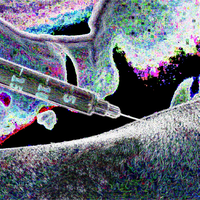| Pyridine | |
|---|---|
| Molecular structure via molpic based on CDK |
| Physical properties [] | |
|---|---|
| Molecular mass | 79.10 g/mol [1] |
| Density | 0.983 at 68 °F (USCG, 1999) - Less dense than water; will float g/cm3 [1] |
| Appearance | Colorless to yellow liquid. [1] |
| Odor | Sharp, nauseating [1] |
| Taste | AMINE TASTE [1] |
| Melting point | -44 °F (NTP, 1992) [1] |
| Boiling point | 239 ° [1] |
| Decomposition | When pyridine is heated to decomposition, cyanide fumes are released. [1] |
| Solubility | greater than or equal to 100 mg/mL at 70.7 °F (NTP, 1992) [1] |
| Predicted LogP | 0.7 [1] |
| Structural Identifiers [] | |
|---|---|
| Molecular formula | C5H5N [1] |
| IUPAC name | pyridine [1] |
| SMILES | C1=CC=NC=C1 [1] |
| InChI | InChI=1S/C5H5N/c1-2-4-6-5-3-1/h1-5H [1] |
| InChIKey | JUJWROOIHBZHMG-UHFFFAOYSA-N [1] |
Pyridine
Pyridine (also known as Azabenzene, Azine, Pyridin, Piridina, Pirydyna, RCRA waste number U196, NCI-C55301, FEMA No. 2966, FEMA Number 2966 or CP 32) is a
Chemistry
Stereochemistry []
Pyridine is a achiral mixture
See also []
External links []
References []
National Center for Biotechnology Information. PubChem Compound Summary for CID 1049, Pyridine. Accessed July 19, 2025. https://pubchem.ncbi.nlm.nih.gov/compound/1049
U.S. Food and Drug Administration; National Center for Advancing Translational Sciences. Pyridine. UNII: NH9L3PP67S. Global Substance Registration System. Accessed July 19, 2025. https://gsrs.ncats.nih.gov/ginas/app/beta/substances/NH9L3PP67S
 Anodyne
Anodyne